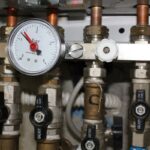The hidden marvel of water management, Exploring underground drainage, Building drain tips, Stormwater advice
The Hidden Marvel of Water Management: Exploring Underground Drainage
11 Oct 2023
When you are thinking about urban infrastructure and the components that are included, one crucial and often underappreciated factor is the underground drainage systems. These intricate networks of pipes, tunnels, and culverts that intertwine and flow throughout the building and its surroundings play a vital role in managing stormwater, preventing flooding, and maintaining the overall health and functionality of our cities.
Are you interested to find out more about the hidden marvels of water management that are underground drainage systems? Let’s take a look at their importance, shedding some light on these systems that otherwise remain below the ground and out of sight.
What is the need for underground drainage?
In many urban areas where buildings take up much of the space, there is a constant challenge faced involving the management of excessive rainwater during storms and other weather changes. Without proper drainage systems in place, many cities would be prone to flooding, which in turn would lead to property damage and health hazards, as well as some severe disruptions to daily life.
The main bulk of the management that solves these issues is underground drainage systems, which provide an efficient and discreet solution, preventing excess water from accumulating on the streets, and ensuring the safety of both the buildings and their inhabitants.
What makes up an underground drainage system?
There are a few components that combine to complete a working system for underground drainage, and these all play their own roles within the system. Pipes, conduits, catch basins, manholes, and other parts of the system, all come into play during the flow of excess water. Let’s break down the most vital parts of the system;
Pipes and Conduits: The structural backbone of any underground drainage system is an extensive network of pipes and conduits which carry water and transport it to its desired destination. These pipes are typically made from durable yet flexible materials such as plastic, and are carefully designed and connected to allow water to flow through them. These can be implemented in places like roads and around the outside of a home, with designated discharge points like rivers or treatment plants. The size and material of the pipes depends on how much waterflow is expected in the area they are used.
Catch Basins and Manholes: Along the drainage network, these two factors are strategically placed to control the flow of water. Catch basins are sometimes known as storm drains, and the ‘trap’ part comes from their purpose of catching debris and sediment in order to prevent blockages in the system. Manholes, on the other hand, provide physical access points for inspection and maintenance – hence – a hole for a man or woman to fit into.
Detention and Retention Systems: In some cases, the underground drainage systems that allow water flow will incorporate detention and retention systems in order to help regulate the water. Detention systems, to explain simply, temporarily hold excess water during heavy rainfall, and then release it slowly back into the drainage system. Think of it as being placed in detention at school – you’re not in there forever, but it slows the rest of your day down. On the contrary, retention systems will hold excess water for a longer period of time, with the intent of this water being used for non-potable purposes, which in turn promotes more sustainable water management and allows for a smoother cycle.
What design considerations are needed for underground drainage systems?
During the process of designing a sustainable and efficient system for underground drainage, careful planning and consideration must be applied. Here are some of the most important considerations to have;
Hydraulic Capacity: Engineers involved in creating the underground drainage systems must accurately calculate the capacity needed to handle how much stormwater is expected in the system. This process involved analysing the rainfall patterns for the area, inspecting the surface areas and potential runoff volumes, all while making sure the system will be capable of handling the amount of water that will enter it. Hydraulic modelling techniques and thorough research are expected and certain techniques can help simulate scenarios to enhance optimisation for the system.
Sustainable Approaches: As the world keeps developing, so does the need for sustainable approaches and solutions in every aspect. Underground drainage systems are now incorporating green infrastructure elements, including permeable pavements, rain gardens, and green roofs. The latter promotes natural filtration and reduces stormwater runoff. These nature-based solutions mitigate the impact of rainwater while enhancing the biodiversity of the urban area they are used in.
Flood control and resilience: The increasing frequency and intensity of storms caused by climate change has meant that drainage systems must be redesigned constantly to handle extreme weather. Using advanced modelling techniques and predictive analysis can aid in this. A system’s resilience to the weather is a massive factor, and incorporating strategies such as overflow storage, floodplain management, and emergency response plans, all contribute to the overall resilience of an underground drainage system.
What are the future challenges?
In order to ensure the effectiveness and longevity of an underground drainage system, regular maintenance and thorough inspections are essential. Both of these factors include inspecting pipes for cracks and corrosions, clearing built-up debris from catch basins, repairing damage, and clearing blockages. While cities grow and the weather patterns adjust, drainage systems must also be constantly adapted to ensure maximum safety and efficiency. The integration of smart monitoring technologies facilitates proactive maintenance, early issue detection, and resource allocation with maximum efficiency.
Underground drainage systems are hidden from view, but they are not an ‘out of sight, out of mind’ situation. It is important to be mindful of the drainage systems in place for your building, as well as maintaining its efficiency to improve your safety and living space. As we continue to face climate-related challenges and urbanisation in rural areas, it is vital to incorporate innovative approaches, ongoing maintenance, and sustainable design wherever possible. All of these factors will be crucial in ensuring the resilience, efficiency, and lifespace of any underground drainage system.
Comments on this The Hidden Marvel of Water Management: Exploring Underground Drainage article are welcome.
Drainage
Drainage Infrastructure and Plumbing Posts
Why it is important to clean blocked drains
Ultimate Drainage Infrastructure Guide
How to get rid of drain flies in one week
Building Articles
Residential Architecture
Comments / photos for the The Hidden Marvel of Water Management: Exploring Underground Drainage page welcome





